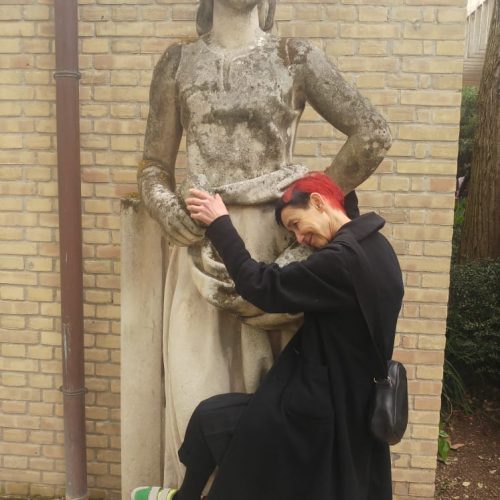The event, ‘Escaping the Lawscape: a participatory game in the Giardini of Venice Art Biennale’, is drawn directly from Professor Andreas Philippopoulos-Mihalopoulos’s research on the lawscape. The action, which took place during the three days of the Venice Art Biennale opening from 8 to 10 May, was commissioned by the Dallas Pavilion 2019 and was part of UK in Venice representation.
‘Escaping the Lawscape’ is a collaborative game devised by Professor Andreas Philipoppoulos-Mihalopoulos, artist Julius Colwyn and urban planner Liu Yang, based on the theories of the Lawscape and Spatial Justice by Professor Philipoppoulos-Mihalopoulos. The initial iteration of the game was part of a larger project by artist Heather Barnett and commissioned by Arebyte Gallery as part of their 2017 Arts Council England funded programme.
During the game, attendees roamed the Venice Art Biennale’s Gardens, becoming aware of the way they interact with the norms and laws of space, other bodies and other flows of movement.
‘Escaping the Lawscape’ enabled participants to explore the possibility of escaping their internalised norms and external regulations on three levels: first, by going deeper into them; second, by running against them and third, by changing the discourse and opening up to other possible configurations of the lawscape.
The project invited participants to become performative bodies who are aware of obedience and disobedience, with social pressure to conform or to resist. They were able to experience sedimented ways of dealing with otherness and difference, habits, rituals and spatial norms that operate within and upon us, as we move through shared social spaces in transition.
Participants shared excellent feedback on their experience, stating that the game was “playful and thoughtful at the same time” as well as it being “liberating”.
Speaking about his collaborative game, Professor Andreas Philippopoulos-Mihalopoulos said: “I was very honoured to be invited to do this action at the Venice Art Biennale opening. It draws directly on my academic research, but, being an art project, it is presented in an embodied and emplaced way, allowing participants to feel the law under their skin.”
(Text originally published here).

